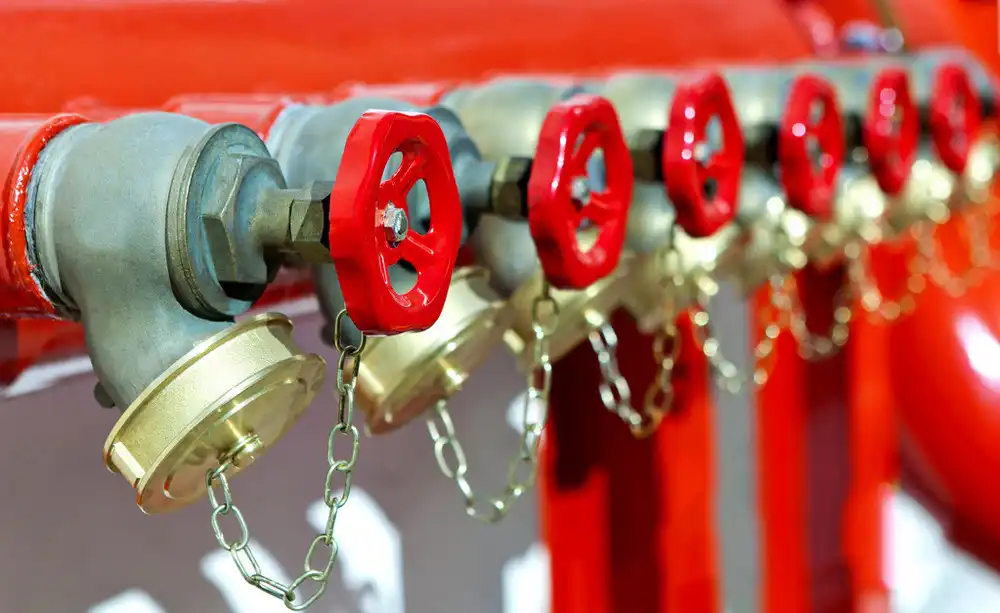Two of the most widely used types of valves in industrial, commercial, and residential applications are the gate valve and the check valve. While both serve vital roles in fluid control, their designs, functions, and applications differ significantly. Understanding the differences between these two types of valves is essential for selecting the right valve for a specific system.
This comprehensive guide will explore the fundamental differences between gate valves and check valves, their working principles, designs, applications, and maintenance requirements.
1.Definition and Purpose
Gate Valve
A gate valve is a type of valve that uses a flat or wedge-shaped gate (disc) to control the flow of fluid through a pipeline. The movement of the gate, which is perpendicular to the flow, allows for complete closure or complete opening of the flow path. Gate valves are typically used when a full, unobstructed flow or a complete shut-off is required. They are ideal for on/off control but are not suitable for throttling or flow regulation.
Check Valve
A check valve, on the other hand, is a non-return valve (NRV) designed to allow fluid to flow in one direction only. Its primary purpose is to prevent backflow, which can cause damage to equipment or disrupt processes. Check valves operate automatically and do not require manual intervention. They are commonly used in systems where reverse flow could cause contamination, equipment damage, or process inefficiencies.
2.Design and Structure
Gate Valve Design
The key components of a gate valve include:
- Body: The outer casing that holds all internal components.
- Bonnet: A removable cover that allows access to the internal parts of the valve.
- Stem: A threaded rod that moves the gate up and down.
- Gate (Disc): The flat or wedge-shaped component that blocks or allows flow.
- Seat: The surface where the gate rests when closed, ensuring a tight seal.
Gate valves can be classified into rising stem and non-rising stem designs. Rising stem valves provide visual indicators of whether the valve is open or closed, while non-rising stem designs are preferred where vertical space is limited.
Check Valve Design
Check valves come in different types, each with a unique design:
- Swing Check Valve: Uses a disc or flap that swings on a hinge. It opens and closes based on the direction of fluid flow.
- Lift Check Valve: The disc moves up and down vertically, guided by a post. When fluid flows in the correct direction, the disc is lifted, and when the flow stops, the disc drops to seal the valve.
- Ball Check Valve: Uses a ball to block the flow path. The ball moves forward to allow fluid flow and backward to block reverse flow.
- Piston Check Valve: Similar to a lift check valve but with a piston instead of a disc, offering a tighter seal.
The design of a check valve depends on the specific system’s requirements, such as the type of fluid, flow rate, and pressure.
3.Flow Direction and Control
Gate Valve
- Flow Direction: Gate valves allow flow in both directions. Fluid can flow from either side as the valve provides a straight, unobstructed path when fully open.
- Flow Control: While gate valves can technically control flow, they are not designed for throttling. Partial opening of a gate valve can cause vibration, noise, and erosion of internal components.
Check Valve
- Flow Direction: Check valves allow flow in only one direction. Any attempt at reverse flow causes the valve to close automatically.
- Flow Control: Check valves do not control flow rates. Their primary function is to prevent backflow, ensuring that fluid only moves in one direction.
4.Applications
Gate Valve Applications
- Water Supply Systems: Used to start or stop water flow in pipelines.
- Oil and Gas Pipelines: Used for isolation of process lines.
- Irrigation Systems: Control the flow of water in agricultural applications.
- Power Plants: Used in systems carrying steam, gas, and other high-temperature fluids.
Check Valve Applications
- Pump Systems: Prevent backflow when the pump is turned off.
- Water Treatment Plants: Prevent contamination by backflow.
- Chemical Processing Plants: Prevent mixing of chemicals due to reverse flow.
- HVAC Systems: Prevent backflow of hot or cold fluids in heating and cooling systems.







